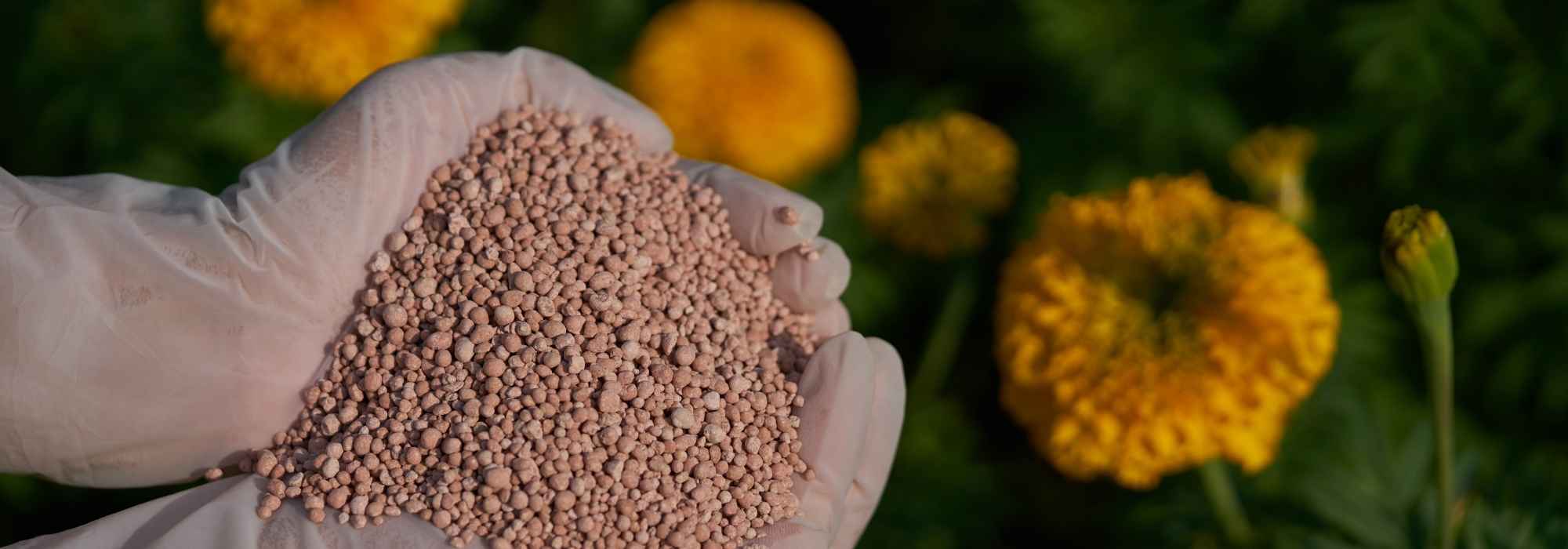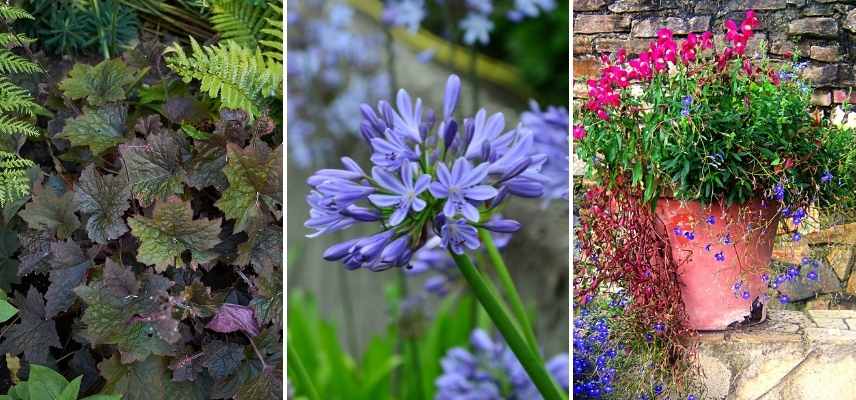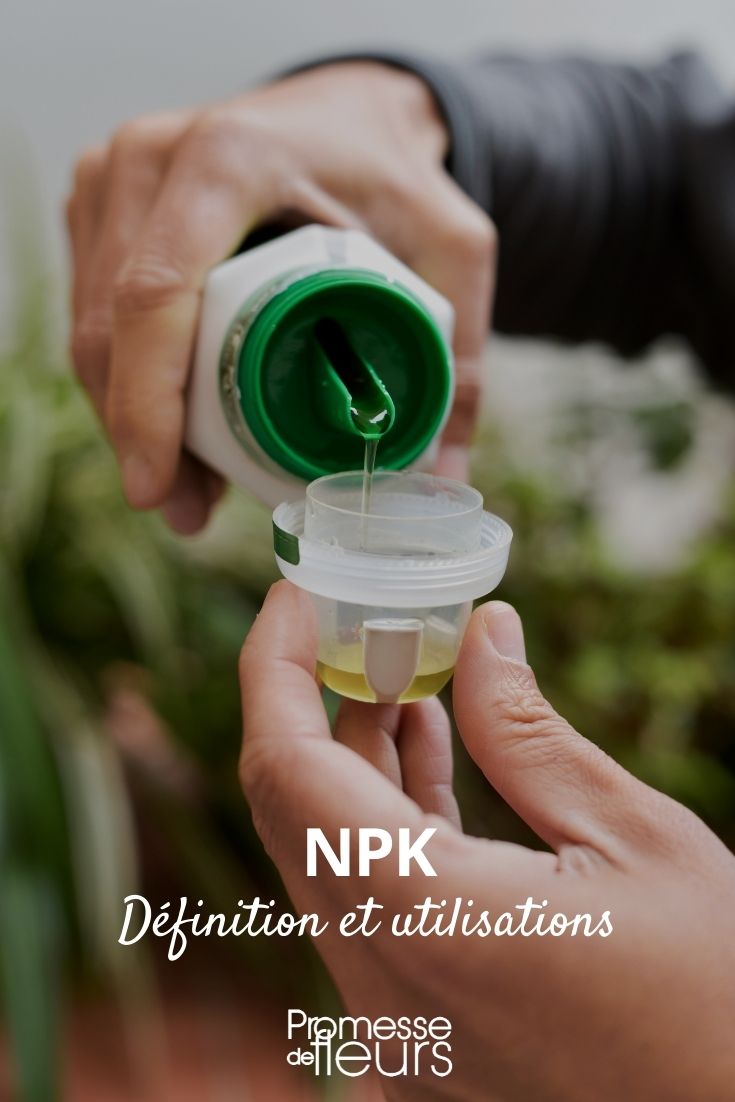
NPK: Definition and Uses
NPK fertilisers: understanding them to use them better
Contents
On every technical sheet and on the packaging of bags or containers of mineral or organic fertilisers, you will invariably find these three letters: N-P-K followed by a series of 3 numbers. But what do these letters and numbers actually mean? Is it useful for us gardeners? It’s quite simple, and we explain everything in this advice sheet.
A bit of chemistry...
You will invariably find the three letters N-P-K followed by a series of three numbers on every box or bag of fertiliser. If we recall our chemistry lessons, we remember that each chemical element is represented by one or two letters and classified in the periodic table of elements, or Mendeleev’s table. For example: O for oxygen, W for tungsten, or Na for sodium…
Well, N, P, and K are simply the chemical symbols for Nitrogen (N), Phosphorus (P), and Potassium (K).
The numbers that follow these three letters refer to the percentage by mass of each of these three elements contained in the fertiliser. The larger the number, the higher the concentration of the element. However, be cautious of overdosing, especially with chemical fertilisers.
For example, an NPK fertiliser of 6-6-6 contains 6% Nitrogen, 6% Phosphorus, and 6% Potassium, making it balanced. In contrast, an NPK fertiliser of 11-2-3 will be heavily dosed in Nitrogen (11%) compared to Phosphorus (2%) or Potassium (3%), making it nitrogen-dominant.
It is worth noting that by convention, these three letters must always be written in this order.
Some agricultural fertilisers consist of only one of these three elements: these are known as simple fertilisers, often used to address a deficiency. Others combine two elements: these are called binary compound fertilisers. Complete agricultural fertilisers, containing all three elements N, P, and K, are referred to as ternary compound fertilisers. These are the ones you will find most often for our gardens.
Fun fact: a German chemist, specialising in agricultural chemistry, defined in 1861 the four main elements affecting plant growth: Potassium (K), Nitrogen (N), Oxygen (O), and Phosphorus (P). Interestingly, this chemist was named Wilhelm… Knop. What an excellent mnemonic device to remember his research in progress!
Read also
Garden fertiliser: how to choose it?Why NPK?
Nitrogen, phosphorus, and potassium are the three main chemical elements found in all mineral as well as organic fertilisers. These are macronutrients or macro-elements. It is therefore only natural that we have chosen to highlight them.
- N: nitrogen stimulates the growth of the vegetative part (leaves, stems, buds…) and enables photosynthesis. For example, it can be found in nettle manure, grass clippings, or ground horn;
- P: phosphorus promotes good rooting, but it is also useful for the production of healthy flowers, seeds, and fruits. Phosphorus also enhances the plant’s resistance to diseases. It can be found in bone meal;
- K: potassium enhances the action of nitrogen and phosphorus. It also plays a role in the formation and pigmentation of flowers and fruits. Potassium also improves resistance to cold, pests, and diseases. It can be found in wood ash.
However, plants also need other elements beyond the NPK macro-elements. These are the so-called secondary elements such as calcium (Ca), magnesium (Mg), and sulphur (S). Additionally, some trace elements like iron (Fe), zinc (Zn), manganese (Mn), silicon (Si), selenium (Se), boron (Bo), copper (Cu), and molybdenum (Mo). In short! Don’t be surprised to find some of these chemical elements on the technical sheet of your fertiliser. Some NPK fertilisers are enriched with one or more of these secondary elements or certain trace elements.
 The nitrogen, potassium, and phosphorus content will vary depending on the type of plant
The nitrogen, potassium, and phosphorus content will vary depending on the type of plant
Which NPK fertiliser to choose?
Depending on the formulation, the use of fertilisers will vary. More nitrogen, more potassium, or completely balanced: it depends on which plants it is intended for:
- Vegetable garden: a fertiliser rich in potassium, but containing a good amount of nitrogen and phosphorus. In short, a rather balanced fertiliser;
- Roses and flowering bushes: a fertiliser rich in potassium (K) for beautiful flowering;
- Fruit trees and bushes: a fertiliser rich in potassium and, if possible, enriched with magnesium;
- Potted plants and window boxes: potted plants quickly suffer from a lack of nutrients. A well-balanced fertiliser with potassium and phosphorus will be perfect for flowering plants, while a highly nitrogenous fertiliser will suit decorative foliage plants;
- Lawn: the important factor is leaf growth, so a fertiliser rich in nitrogen;
- Special cases: there are specific fertilisers for houseplants, citrus trees, ericaceous plants, and hydrangeas…
To learn more about the different types of fertilisers, find all our tips for making the right choice in the following sheets:
→ Fertiliser for vegetable garden
→ Fertiliser for window boxes and pots
Please note: a chemical, organic, or bio fertiliser only nourishes the plant and does not improve the soil. Only the addition of compost, manure, good mulching (for example, with RCW), or… in some cases, simply letting Nature take its course can improve your soil, making it rich and balanced while promoting soil life.
- Subscribe!
- Contents
































Comments